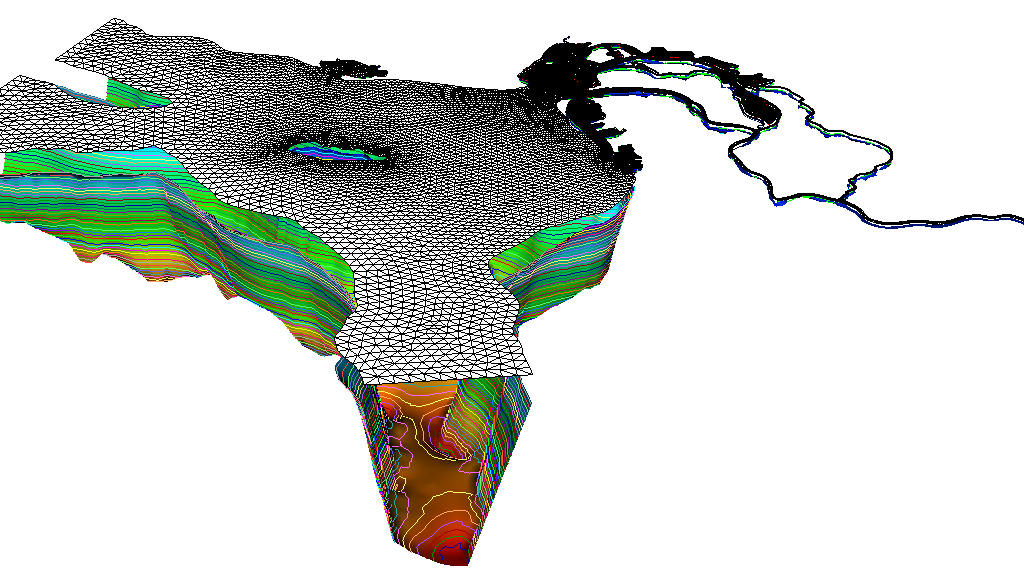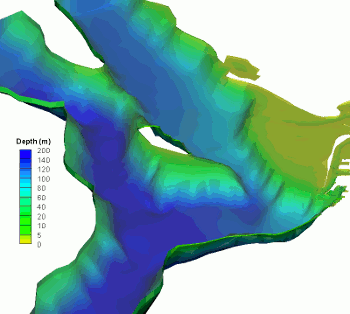Salish Sea Model Data Portal
Solution files from past Salish Sea Model simulations are made available to the public
Pacific Northwest National Laboratory has generated an archive of results from the SSM. Please contact Tarang Khangaonkar if you are interested in additional information or would like access to specific model solution data sets.
Hydrodynamic and Water Quality Solutions
-
Oil Spill Modeling in the Salish Sea using the Salish Sea Model (SSM) and General NOAA Operational Modeling Environment (GNOME) – A Demonstration Package Prepared for Education and Outreach
PNNL, in collaboration with the Salish Sea Modeling Center (SSMC) and in consultation with the Education Coordinator for the SeaDoc Society, created this package for teaching demonstrations and use by middle and high school teachers and their students. The model solution is provided solely for educational and research purposes; any use of the model solution beyond the intended scope must be approved by PNNL. No rights in the underlying intellectual property, beyond the grant of this permissive research license, is provided herein. The user assumes responsibility for the model use, misuse, or inability to use the model solution and in no event shall PNNL or SSMC have any liability for damages, including but not limited to any indirect, incidental, or consequential damages, arising from or in connection with the use of the model solution. Contact Tarang Khangaonkar for more information.
Download the ZIP file here (70 MB). Instructions are in the SSMC_ReadMe text file.
- Year 2014 Hydrodynamic and Biogeochemical Model Results (Khangaonkar et al. 2018)
- Salish Sea Model - Y2014 Hydrodynamic Solution Files
- Salish Sea Model - Y2014 Water Quality Solution Files*
* Note: The water quality solution has been updated to reflect model upgrades including DO-pH harmonization, effect of eelgrass, and explicit zooplankton simulation. - Salish Sea Model - Y2014 Hydrodynamic Solution Files - High Resolution Summer Months (sample data set - July 1, 2014 to August 30, 2014)
Visualization
All variables are computed or interpolated to represent the centroid of the triangular cells in the finite volume grid. These include velocity components in three dimensions, salinity, temperature, and water-quality constituents. The hydrodynamic (FVCOM) component of the SSM is set up to generate hourly solution files in binary format. The water-quality FVCOM-Integrated Compartment Model (FVCOM-ICM) component of the SSM generates binary solution files at 6-hour intervals.
To facilitate the use and application of the SSM results by our community, we have developed output procedures to save hydrodynamic and water-quality solution files as *.netcdf files optimized for processing with the VisIt visualization software, developed by the U.S. Department of Energy. This tool is well suited for handling unstructured grid models. VisIt is a free interactive parallel visualization and graphical analysis tool for viewing scientific data on Unix and PC platforms.

Effluent and Oil Spill Transport
GNOME (General NOAA Operational Modeling Environment) is the modeling tool that the Office of Response and Restoration's (OR&R's) Emergency Response Division uses to predict the possible trajectory that a pollutant might follow in or on a body of water, such as in the case of an oil spill. With assistance from NOAA, we developed output procedures to create GNOME-compatible *.netcdf files that can feed directly into the GNOME program.
